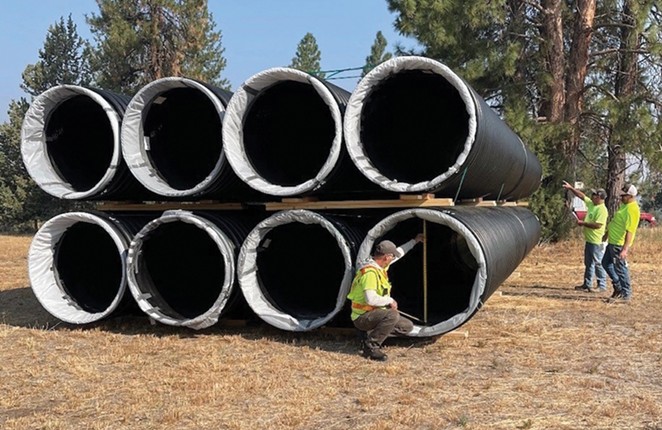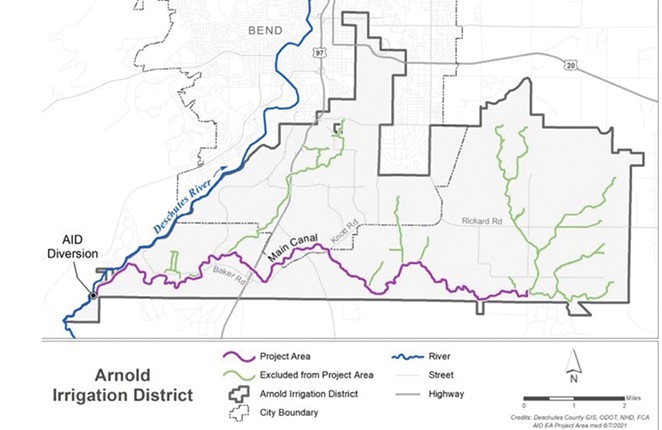On Oct. 27, a federal district court judge dismissed a lawsuit attempting to stop Arnold Irrigation District's Main Canal Water Conservation Project, a plan to pipe a 12-mile canal. The lawsuit was brought on by Save Arnold Canal, a group with concerns about the proposed piping project.

SAC initially filed the lawsuit against AID, the U.S. Department of Agriculture and the Natural Resources Conservation Service in 2022. The group alleged in the lawsuit that AID did not thoroughly explore other alternatives to canal piping and that the project violated the National Environmental Policy Act, the Watershed Protection and Flood Prevention Act and the Administrative Procedures Act.
According to the 2022 complaint, Save Arnold Canal argued the project would result in a loss of habitats surrounding the canal and a reduction of property values. The group was also concerned that the lack of water seeping into the ground would affect nearby trees and wildlife and aquifer recharging.
Plaintiffs argued in the injunction that “piping the Arnold Main Canal would eliminate a century-old dependence of seasonal water by local wildlife, vegetation, trees and aesthetic enjoyment by the residents of the canal.”
Save Arnold Canal, made up of 200 supporters, began organizing in 2019, after AID released a scoping environmental assessment draft.
In July, SAC's claims against the irrigation district were dismissed. In August, the federal court denied a preliminary injunction brought on by individual property owners attempting to halt construction of the canal piping project while the case was pending.
Plaintiffs argued in the injunction that "piping the Arnold Main Canal would eliminate a century-old dependence of seasonal water by local wildlife, vegetation, trees and aesthetic enjoyment by the residents of the canal."
After the injunction was denied, the plaintiffs dropped their original lawsuit against the AID project, which then led to a dismissal.
Members of Save Arnold Canal declined to comment for this story.
The project will pipe approximately 11.9 miles of the AID main canal, which runs mostly though southeast Bend. AID claims that its main canal experiences, on average, 34% water loss due to seepage.
Piping the canal, according to a report from AID, will increase water supply for fish and habitat in the Deschutes River, increase the reliability of water delivery to patrons, conserve water, improve public safety and reduce District operation and maintenance costs.
According to a press release, the Court determined that the piping project was a reasonable measure to provide water to its patrons.
AIC covers 4,384 irrigated acres, serving 646 customers in Deschutes County. It operates and maintains 39 miles of canals and laterals within the Deschutes Basin.
The piping project, underway as of Sept. 11, according to AID District Manager Steve Johnson, will cost $34 million.
The cost of lining a canal rather than piping it, a solution that some AID patrons said they found more sufficient in previous reporting from the Source Weekly, would cost $40 million. Johnson said the costs mainly go toward construction, the cost of the pipe and engineering.
"The general rule of thumb we use for all the piping projects in Central Oregon is costing about $1 million to conserve one cubic foot per second," said Johnson. According to Johnson, the piping project will conserve 32 and a half CFS, a metric used to measure water that's flowing in the river or taken out for irrigation purposes.
"We hope it's less than that, but until you go out for bids and actually get the thing constructed, I don't know for sure what that final number is going to be, but we don't think it will exceed $34 million," said Johnson.
In August 2022, the USDA Natural Resources Conservation Service released its final environmental assessment finding that the AID piping project would not cause significant local, regional or nation impacts to the environment.
The project, which will be completed in phases, will conclude in April 2026. "We're pleased with the decision, and we can just focus on getting the project done and not having to spend a lot of patron money for legal proceedings," said Johnson.























